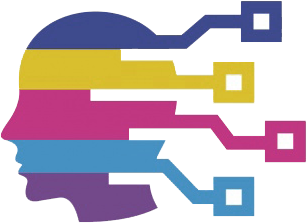At the recent Google I/O 2025, Google rolled out an impressive array of updates for Wear OS 6, marking a significant shift in both aesthetics and functionality. The integration of the Material 3 Expressive design language signals Google’s commitment to enhancing the user experience not just through hardware advances but also through a refined software ecosystem. This fresh approach, grounded in coherence and user customization, promises to elevate the smartwatch market dramatically.
As wearable technology continues to mature, the emphasis on design aesthetics has become more prominent. The new developer preview of Wear OS 6, built on the robust Android 16, showcases an intentional effort by Google to unify app designs. By adopting a common system font across applications, users will enjoy a seamless transition as they navigate their devices. Such uniformity is crucial in cultivating a visually appealing and user-friendly experience, especially on smaller screens where readability can be a challenge.
Developers Empowered with Richer Tools
One of the highlights of the Wear OS 6 announcement is the introduction of numerous developer tools aimed at enriching app customizability. The provision of Figma design files and comprehensive design guidelines stands out, emphasizing Google’s understanding of the developer landscape. The suite includes advanced libraries like Wear Compose Material 3 and Wear ProtoLayout, which allow developers to explore extended color palettes and innovative typography. This wealth of resources underscores Google’s commitment to empowering developers to create applications that not only meet user needs but also resonate aesthetically with the new design language.
The introduction of a three-slot tile layout is another pivotal enhancement. With a structured organization that includes title, main content, and bottom slots, apps can maintain a consistent appearance across varying device sizes. This careful consideration of user interface design exhibits Google’s dedication to both form and function, offering a smoother navigation experience.
Dynamic Interaction and Enhanced Functionality
Beyond merely aesthetic enhancements, Wear OS 6 introduces dynamic interaction capabilities previously unseen in earlier versions. The introduction of animated state transitions, particularly in watch faces, signifies a step toward making wearables not just practical tools but also personal fashion accessories that respond to the user’s touch. The ability to customize watch faces further with animations adds a touch of personality and flair that many users are likely to embrace.
Moreover, the rollout of the CredentialManager API represents a definitive leap into the future of security within wearable technology. Enabling passkey authentication directly through the watch opens new avenues for user convenience and security, addressing rising concerns over digital privacy. Enhanced media controls in Wear OS 5.1, such as fast-forward and rewind capabilities for podcasts, further exemplify Google’s focus on creating a richer user experience that aligns with the daily lives of consumers.
Google’s strides with Wear OS 6 indicate a comprehensive understanding that as the market for smartwatches expands, so too must the features and designs that enhance the user experience. By marrying sophisticated design with developer-focused tools and improved interaction, Google is not merely participating in the wearable tech race; they are setting the pace for others to follow.

